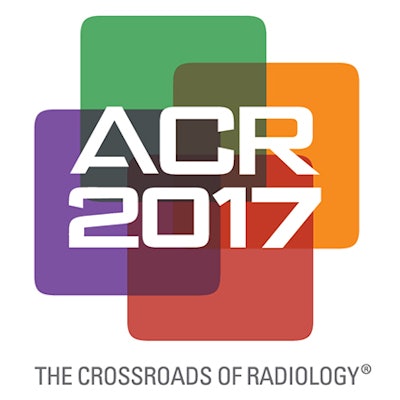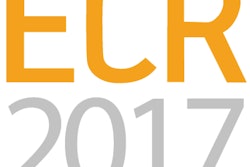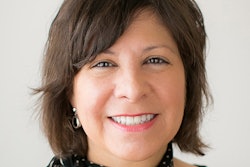
So maybe this is why you feel so busy: Radiologists serve more Medicare beneficiaries per capita than any other medical specialty, according to a study being presented at this week's American College of Radiology (ACR) meeting in Washington, DC.
The findings underscore the need for radiologists to raise their visibility to patients and highlight the role they play in the patient care continuum, said Dr. Kristina Hoque of the University of Southern California's Keck School of Medicine.
 Dr. Kristina Hoque from the University of Southern California.
Dr. Kristina Hoque from the University of Southern California."Too often, radiology is considered a nonpatient-facing field," Hoque told session attendees. "But we can't lose sight of the integral role radiologists play in managing patient care."
Into the light
Over the past few years, the ACR has been emphasizing the theme of radiologists "stepping into the light" and out of the reading room, Hoque told AuntMinnie.com. This study supports that effort.
"There's a lot of discussion in the ACR about becoming more visible, and also making known our place within the larger healthcare continuum," she said. "That's why we conducted this research, to look at how big a part radiology plays in daily patient care."
Hoque and colleagues used data from the Medicare Physician and Other Supplier Public Use File to identify all physicians in 56 specialties who provided services to beneficiaries in 2013, calculating beneficiary counts per provider.
They found that diagnostic radiologists cared for more Medicare beneficiaries than any other specialty, as noted in the table below, which lists the top five specialties by number of beneficiaries served.
| No. of Medicare beneficiaries served by medical specialty | |
| Specialty | No. of beneficiaries served in 2013, per provider |
| Diagnostic radiologists | 3,150 ± 2,344 |
| Cardiologists | 2,511 ± 2,000 |
| Cardiac electrophysiologists | 2,279 ± 1,604 |
| Dermatologists | 2,164 ± 2,023 |
| Urologists | 2,061 ± 1,711 |
Interventional radiologists were eighth on the list, at 1,685 ± 1,802 beneficiaries served per provider that year, while nuclear medicine physicians were 16th, at 1,286 ± 1,403 beneficiaries served per provider.
Although the dataset didn't allow for the identification of which interactions would have involved face-to-face communication, the findings suggest there are opportunities for radiologists to increase their direct communication with patients -- and therefore boost the profile of the specialty, Hoque told session attendees.
"This single snapshot of imaging utilization demonstrates radiologists to be leaders in current patient care orchestration," she said. "And imaging utilization rates across all modalities continue to rise, which means that in the future, radiologists will have an increasingly prominent impact on patient care."
Bright future
As radiologists continue to play a more prominent role in patient care, it's crucial to emphasize a value-based, patient-centered framework, in part by practicing according to the ACR's Image Wisely initiative and advocating for appropriate use criteria, Hoque told session attendees. In addition, radiologists should push for the development of physician-focused payment models and become leaders among subspecialists in revamping patient care.
"Not only will radiologists continue to touch more patient lives than any other medical specialty, they will also impact the practice of other subspecialties more than any other type of physician," she said.
But efforts to increase radiology's visibility do not have to be complicated, Hoque told AuntMinnie.com.
"Keeping the reading room door open, picking up the phone, talking to patients when they want to know more about their exam -- these are all simple tasks that make us more visible," she said.
Hoque and colleagues hope their research will spark conversation and lead to more evidence of radiology's key role in healthcare.
"We plan to continue our work and explore the specific demographic, gender, and regional characteristics of the radiologists who are having an effect on patients' lives more than anyone else," she said. "Once we tease apart the data, we can encourage our peers to become part of the discussion about radiology's visibility, on both the local and national levels."




















